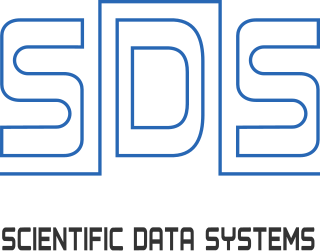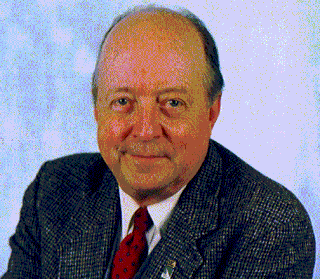Related Research Articles
IBM mainframes are large computer systems produced by IBM since 1952. During the 1960s and 1970s, IBM dominated the computer market with the 7000 series and the later System/360, followed by the System/370. Current mainframe computers in IBM's line of business computers are developments of the basic design of the System/360.

An operating system (OS) is system software that manages computer hardware and software resources, and provides common services for computer programs.
PL/I is a procedural, imperative computer programming language initially developed by IBM. It is designed for scientific, engineering, business and system programming. It has been in continuous use by academic, commercial and industrial organizations since it was introduced in the 1960s.

The IBM System/360 (S/360) is a family of mainframe computer systems that was announced by IBM on April 7, 1964, and delivered between 1965 and 1978. It was the first family of computers designed to cover both commercial and scientific applications and a complete range of applications from small to large. The design distinguished between architecture and implementation, allowing IBM to release a suite of compatible designs at different prices. All but the only partially compatible Model 44 and the most expensive systems use microcode to implement the instruction set, featuring 8-bit byte addressing and binary, decimal and hexadecimal floating-point calculations.

In computing, time-sharing is the sharing of a computing resource among many tasks or users. It enables multi-tasking by a single user or enables multiple user sessions.
In computing, a virtual machine (VM) is the virtualization or emulation of a computer system. Virtual machines are based on computer architectures and provide the functionality of a physical computer. Their implementations may involve specialized hardware, software, or a combination of the two. Virtual machines differ and are organized by their function, shown here:

The Michigan Terminal System (MTS) is one of the first time-sharing computer operating systems. Created in 1967 at the University of Michigan for use on IBM S/360-67, S/370 and compatible mainframe computers, it was developed and used by a consortium of eight universities in the United States, Canada, and the United Kingdom over a period of 33 years.

The Conversational Monitor System is a simple interactive single-user operating system. CMS was originally developed as part of IBM's CP/CMS operating system, which went into production use in 1967. CMS is part of IBM's VM family, which runs on IBM mainframe computers. VM was first announced in 1972, and is still in use today as z/VM.
This article presents a timeline of events in the history of computer operating systems from 1951 to the current day. For a narrative explaining the overall developments, see the History of operating systems.

CP/CMS is a discontinued time-sharing operating system of the late 1960s and early 1970s, known for its excellent performance and advanced features. Among it's three versions, CP-40/CMS was an important 'one-off' research system that established the CP/CMS virtual machine architecture. It was followed by CP-67/CMS, a reimplementation of CP-40/CMS for the IBM System/360-67, and the primary focus of this article. Finally, CP-370/CMS was a reimplementation of CP-67/CMS for the System/370. While it was never released as such, it became the foundation of IBM's VM/370 operating system, announced in 1972.
Tymshare, Inc was a time-sharing service and third-party hardware maintenance company competing with companies such as CompuServe, Service Bureau Corporation and National CSS. Tymshare developed or acquired various technologies, such as data networking, electronic data interchange (EDI), credit card and payment processing, and database technology. It was headquartered in Cupertino, California from 1964 to 1984.

Scientific Data Systems (SDS), was an American computer company founded in September 1961 by Max Palevsky, Arthur Rock and Robert Beck, veterans of Packard Bell Corporation and Bendix, along with eleven other computer scientists. SDS was the first to employ silicon transistors, and was an early adopter of integrated circuits in computer design. The company concentrated on larger scientific workload focused machines and sold many machines to NASA during the Space Race. Most machines were both fast and relatively low priced. The company was sold to Xerox in 1969, but dwindling sales due to the oil crisis of 1973–74 caused Xerox to close the division in 1975 at a loss of hundreds of millions of dollars. During the Xerox years the company was officially Xerox Data Systems (XDS), whose machines were the Xerox 500 series.
The SDS 940 was Scientific Data Systems' (SDS) first machine designed to directly support time-sharing. The 940 was based on the SDS 930's 24-bit CPU, with additional circuitry to provide protected memory and virtual memory.
Conversational Programming System or CPS is an early Time-sharing system offered by IBM which runs on System/360 mainframes circa 1967 through 1972 in a partition of OS/360 Release 17 MFT II or MVT or above. CPS is implemented as an interpreter, and users can select either a rudimentary form of BASIC or a reasonably complete version of PL/I. A third option provides remote job entry (RJE) features allowing users to submit JCL job streams for batch processing. A fourth option is called control mode. Normally, only the system operator would be permitted to use control mode. The available features in control mode include:
The IBM Type-III Library was software provided by IBM to its customers, available without charge, liability, or support, and typically in source-code format. The best known examples are for mainframe software, but IBM also used this same classification on smaller systems.
Shared Variables are a feature of the programming language APL which allows APL programs running on one processor to share information with another processor. Although originally developed for mainframe computers, Shared Variables were also used in personal computer implementations of APL. Shared Variables could be used to control peripheral devices, or to communicate with external files, database management systems, or other users. Shared Variables were first introduced by International Business Machines Corporation (IBM) in their APL.SV software product in 1973, and are still available as of 2017, in APLs from IBM and Dyalog, for the operating systems Linux and Windows.
This article covers the History of CP/CMS — the historical context in which the IBM time-sharing virtual machine operating system was built.
The history of IBM mainframe operating systems is significant within the history of mainframe operating systems, because of IBM's long-standing position as the world's largest hardware supplier of mainframe computers. IBM mainframes run operating systems supplied by IBM and by third parties.

Franklin Herbert Westervelt was an American engineer, computer scientist, and educator at the University of Michigan and Wayne State University. Westervelt received degrees in Mathematics, Mechanical and Electrical Engineering from the College of Engineering at the University of Michigan. He attained his PhD in 1961. He was a Professor of Mechanical Engineering at the University of Michigan and an Associate Director at the U-M Computing Center. He was involved in early studies on how to use computers in engineering education.
Ann Hardy was an American computer programmer and entrepreneur, best known for her pioneering work on computer time-sharing systems while working at Tymshare from 1966 onwards.
References
- Hardy, Norman (2004), Tymshare History , retrieved 2008-07-29
- Lehmann Brothers, "Allen-Babcock Computing, Inc.", Lehman Brothers Collection-Twentieth Century Business Archives , retrieved 2008-07-29
- Rochester, Nathaniel (1966), Conversational Programming System Progress Report (PDF), retrieved 2008-07-29
- Rosin, Robert (1969), "PL/I Implementation Survey", PL/I Bulletin, no. 7, pp. 35–42